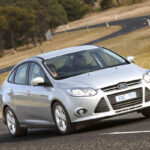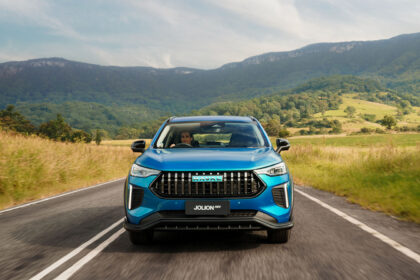Holden’s medium-large Epica wasn’t a sales success during its time on the new-car market that began in March 2007, with the car being quietly slipped off the new-car price list in February 2011.
The Epica was relatively expensive and had a sedan body in a class that favours hatchbacks. Its South Korean heritage didn’t do it any favours either, though there was some Holden input in the design and mechanical setup.
The result is poor resale value that makes the Holden Epica a real bargain on the used-car front.
Epica has moderately good steering feel as it has some Aussie design input in the suspension and steering. However, it may be firmer in its ride on medium to rough roads than some owners like. On motorways it’s impressively smooth and quiet.
Holden Epica’s interior space should be better for a car of this size that has the space saving layout offered by a transverse engine. Legroom in the rear is restricted unless those in the front are willing to give up a few notches of seat travel.
Boot space is good, an advantage of the sedan body as it has a longer tail than hatchbacks’.
Holden Epica has proven reliable to date and we see no reason why this won’t continue as, by the time it was designed, the Koreans had learnt a lot about build quality. As always, good cars can fall into bad hands so it still pays to have a professional inspection before forking out your hard-earned.
The biggest feature of the Holden Epica is its straight-six petrol engine in a class of car that’s totally dominated by four-cylinder engines. The sixes are delightfully smooth and give Epica a real air of refinement.
The six-cylinder petrols come with capacities of 2.0 litres and 2.5 litres. The former are offered only with a five-speed manual gearbox, the latter with an automatic transmission, also with five ratios. Performance is good without being outstanding as these are relatively small engines in a largish car. A slow seller, the 2.0-litre engine was pulled from the Australian market midway through 2008
July 2008 saw the introduction of a turbo-diesel engine. This time with just four cylinders and a capacity of 2.0 litres, but with the advantage of a six-speed automatic transmission compared with the five-speed in the petrol autos. It has far too much turbo lag but once that has finally passed it works well when climbing hills, even with a load on board.
Holden is well represented Australia wide, with dealers in even the smallest of towns. It’s unlikely country dealers will have spare parts of the Epica in stock, but bits can generally be delivered within a couple of business days.
We have heard no real complaints about spare parts prices, or of shortages in the populated areas of Australia.
Epica is easy to work on with a decent amount of underbonnet space. Good home mechanics can do most of their own work – but we advise they steer clear of any safety items.
Insurance costs are generally low. As is sometimes the way with any car that’s a relatively small seller, there can be quite a variation in premium prices so it’s worth shopping around. Just be sure you are comparing apples with apples.
WHAT TO LOOK FOR
Build quality is generally good, but listen for squeaks and rattles when driving on rough roads, especially in the area behind the dashboard. This is unlikely to be a cause for breakdown, but can be irritating.
Check under the bonnet for signs of weeping at the petrol pump.
A petrol engine should start easily and idle very smoothly, anything else is a sign to be wary.
Diesels that are overly noisy may be due for a major service, or an overhaul.
Epicas with the 2.0-litre six-cylinder petrol engine are underpowered by Australian drivers’ standards and may have been thrashed. Get a professional to check it if there’s the slightest doubt.
Upholstery that gets a lot of work may be showing signs of wear. Check the rear seats as bored kids can knock them around.
Look for damage to the front wheels as the Epica is a bigger car than some drivers realise and the wheels may have skimmed the kerb more than once.
HOW MUCH?
Expect to spend from $5000 to $9000 for a 2007 Holden Epica CDX 2.0-litre; $6000 to $10,000 for a 2007 CDX 2.5-litre; $8000 to $12,000 for a 2008 CDX diesel; $10,000 to $15,000 for a 2009 CDXi 2.5-litre; $11,000 to $16,000 for a 2010 CDX diesel; $13,000 to $19,000 for a 2011 CDXi 2.5-litre: and $14,000 to $20,000 for a 2011 CDXi diesel.
CAR BUYING TIP
Cars that were unpopular when new sometimes pick up in value as they age – note the word ‘sometimes’, though…











